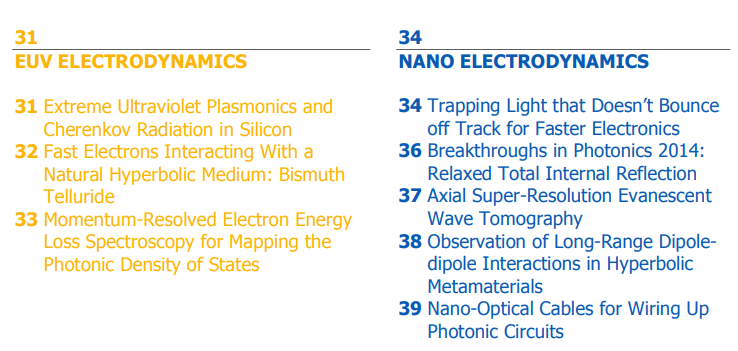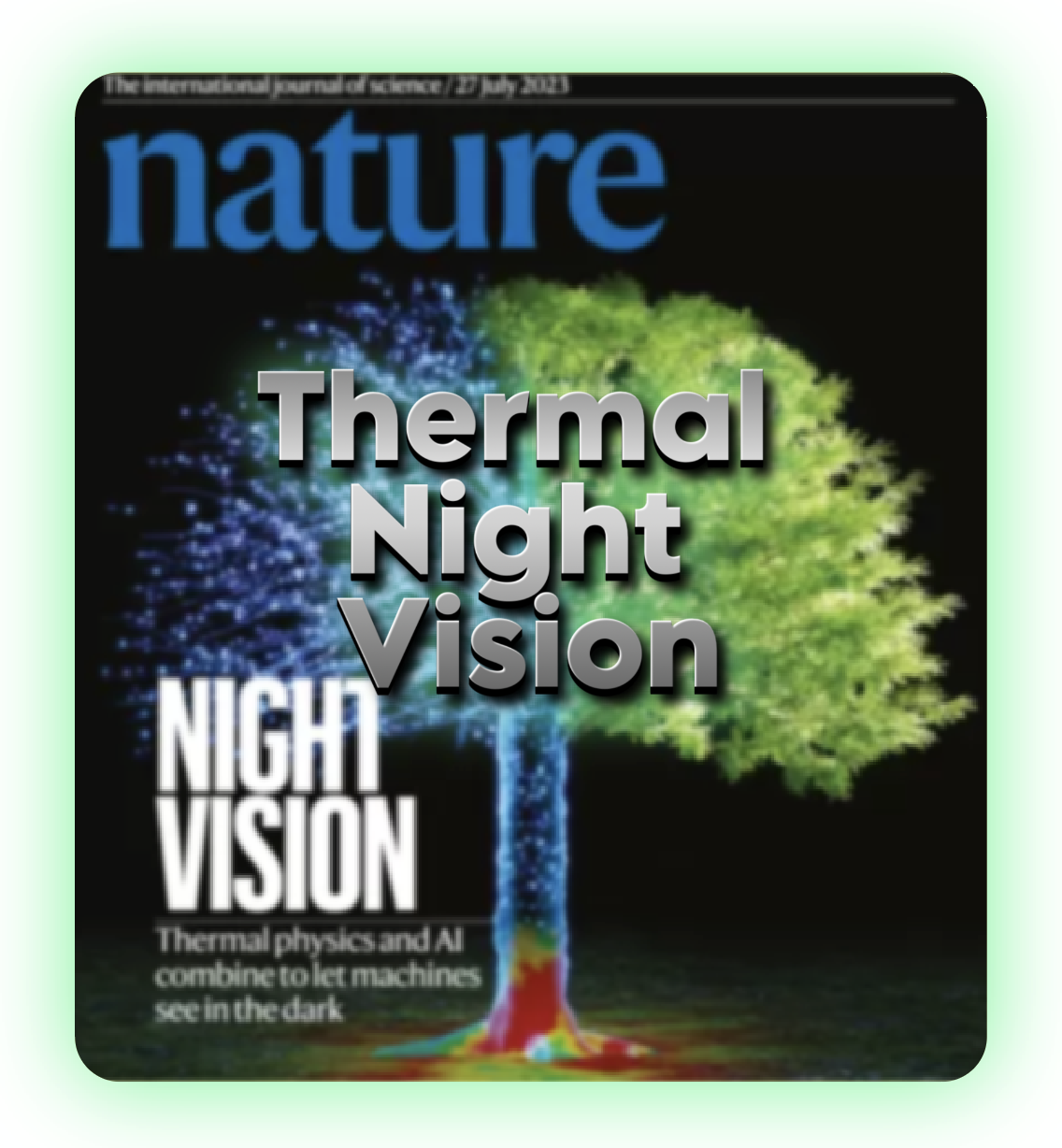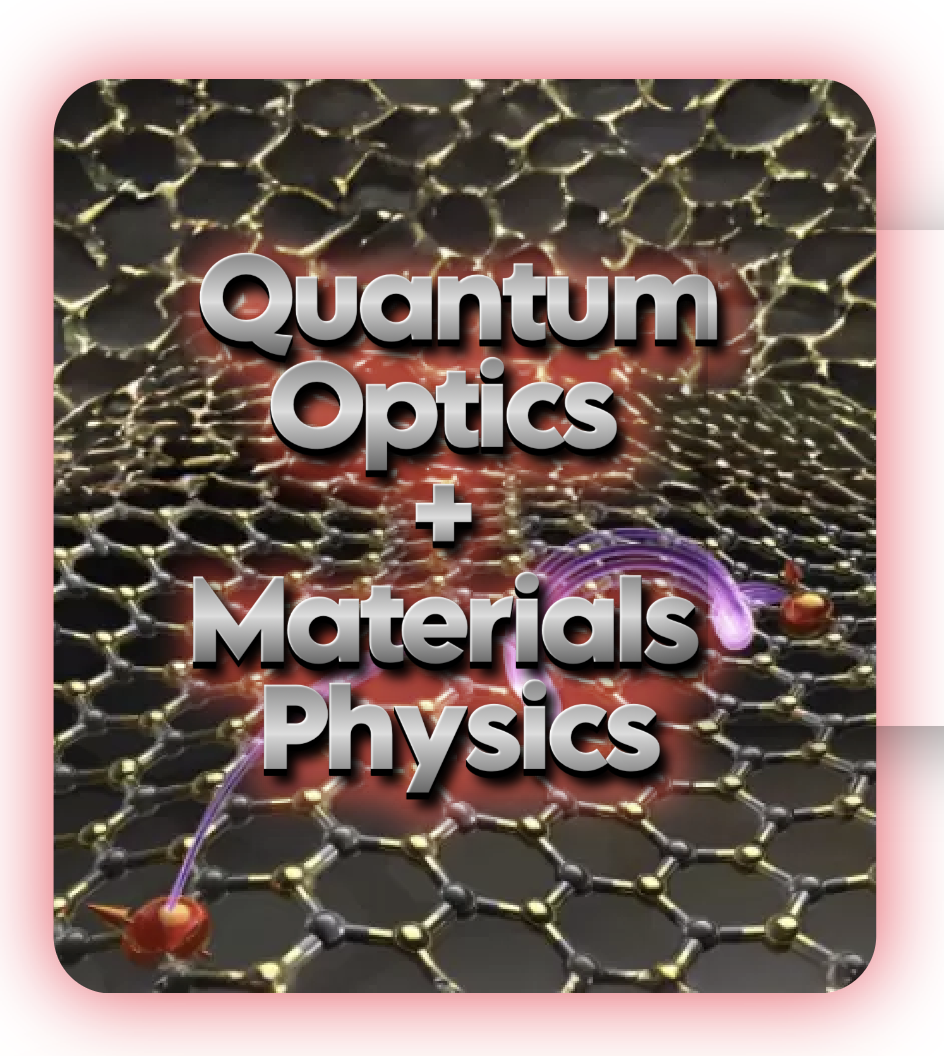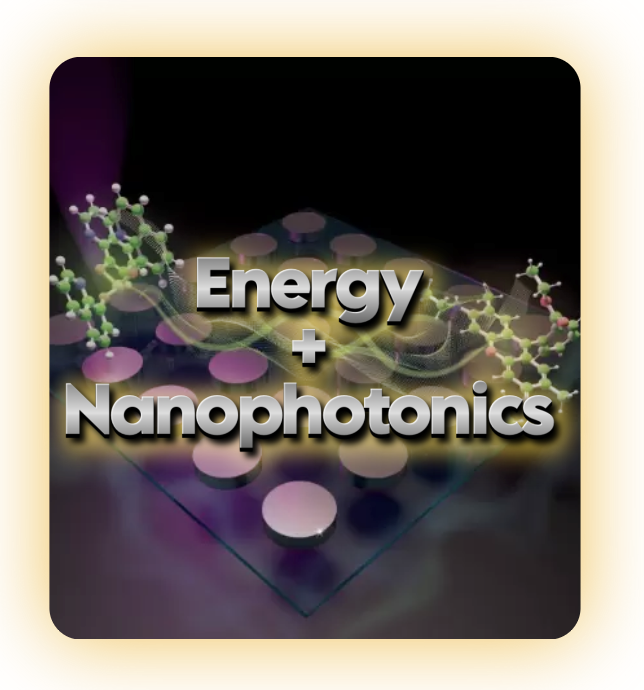Our research spans three major research areas: Optics + Machine Learning, Quantum Optics + Materials Physics and Energy + Nanophotonics. We take a unique theory-driven-experimental approach in all our projects. We have theory offices as well as three laboratories (thermal, quantum and spin) in the Birck Nanotechnology Center. Our group uses the Scifres Nanofab facility at Purdue University for materials innovation and device fabrication. Even though our explorations are driven by curiosity, our final goal is real-world technology that can impact society in the short term. Learn more about each of our key research themes by clicking the tiles below.
Research
Our research spans three major research areas: Optics + Machine Learning, Quantum Optics + Materials Physics and Energy + Nanophotonics. We take a unique theory-driven-experimental approach in all our projects. We have theory offices as well as three laboratories (thermal, quantum and spin) in the Birck Nanotechnology Center. Our group uses the Scifres Nanofab facility at Purdue University for materials innovation and device fabrication. Even though our explorations are driven by curiosity, our final goal is real-world technology that can impact society in the short term. Learn more about each of our key research themes by clicking the tiles below.
Optics + Machine Learning
Machine perception uses advanced sensors to collect information about the surrounding scene for situational awareness. State-of-the-art machine perception using active sonar, radar and LiDAR to enhance camera vision faces difficulties when the number of intelligent agents scales up. Exploiting omnipresent heat signal could be a new frontier for scalable perception. This drives our innovations towards Thermal Night Vision and Space Situational Awareness.
Some of our key advancements and innovations in this area are categorized in the tiles on the left. Click to know more!
Quantum Optics + Material Physics
Our work in the field of quantum optical science & engineering spans from theoretical investigations to experimental demonstrations of quantum effects in various light-matter interactions. A big part of our research is in the investigating Photonic Materials Physics in a range of materials and device engineering for novel applications.
Some of our key areas are:
- Single Photon Driven Quantum Phase Transitions
- Single Photon Interactions with Superconducting Vortices
- Computational EM meets Spin Qubits
- Superdephasing in Collective Atom-Atom Interactions
- Unraveling Deep Microscopic Quantum Optical Polarization
- Vacuum Friction and Casimir forces
- Topological Optical N-Insulators
Click the tile to know more!
Unraveling quantum mysteries with light
Shining light on nanoscale interactions
Energy + Nanophotonics
Traditionally, our group has intensely investigated the area of Energy and Nanophotonics. The breadth of our research puts us in a unique position consisting of advancements across the EM spectrum from THz to UV. While we work on a diverse range of topics, click the tile to know some of our key projects that will provide an insight into our contributions in this area.
Some of the key areas are:
- Spin Angular Momentum of Light
- Dipole-Dipole Interactions
- Infrared photonics materials
- DUV/EUV/EELS
- On-chip Photonics
- Hyperbolic and ENZ Media
Click the tile to dive deeper!
You can read a short summary about the various projects over here and take a deeper dive about each sub-topic by navigating through the above menu.
Area 1: Optics + Machine Learning
- Thermal Night Vision
- Heat-Assisted Detection and Ranging (HADAR)
- TeX Vision
- Thermal Voyager
- Spinning Metasurfaces
- Space Situational Awareness
- Quantum Accelerated Imaging
- Sub-Rayleigh Imaging
- Quantum Optical Sensing
Area 2: Quantum Optics + Materials Physics
- Quantum Detectors & Sensors
- Quantum causality
- Superdephasing in NV centres
- Atomistic topological electrodynamics
- Vacuum fluctuations in matter
- Spin qubits and photonic spin density
- Topological Optical N-insulators
Area 3: Energy + Nanophotonics
- Thermal Photonic Materials
- Dipole-dipole Interactions in Nanophotonics
- Electron Energy Loss Spectroscopy
- Extreme materials
Here is a summary of our research highlights and a snapshot of the table of contents below.
Go to this link for more information: Research Highlights (2010-2020)







